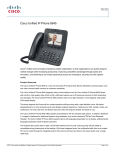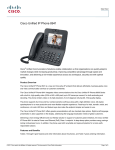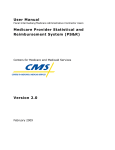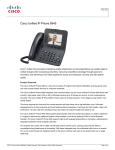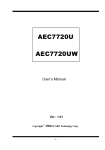Download ELECTRICAL - JustAnswer
Transcript
ELECTRICAL Contents - Wiring Diagrams T-Bar (Floating Deck - Hydro) . . . . . . . . . . . . . . . . . . . . . . . . . . . . . . . . . . . . . . . . . . . . 8 - 16 T-Bar (Fixed Deck - Gear) . . . . . . . . . . . . . . . . . . . . . . . . . . . . . . . . . . . . . . . . . . . . . . . 8 - 17 T-Bar (Fixed Deck - Gear) . . . . . . . . . . . . . . . . . . . . . . . . . . . . . . . . . . . . . . . . . . . . . . . 8 - 18 T-Bar (Fixed Deck - Gear) . . . . . . . . . . . . . . . . . . . . . . . . . . . . . . . . . . . . . . . . . . . . . . . 8 - 19 T-Bar (Fixed Deck - Gear) . . . . . . . . . . . . . . . . . . . . . . . . . . . . . . . . . . . . . . . . . . . . . . . 8 - 20 T-Bar (Floating Deck - Gear) . . . . . . . . . . . . . . . . . . . . . . . . . . . . . . . . . . . . . . . . . . . . . 8 - 21 T-Bar (Floating Deck - Gear) . . . . . . . . . . . . . . . . . . . . . . . . . . . . . . . . . . . . . . . . . . . . . 8 - 22 T-Bar (Floating Deck - Gear) . . . . . . . . . . . . . . . . . . . . . . . . . . . . . . . . . . . . . . . . . . . . . 8 - 23 T-Bar (Floating Deck - Gear) . . . . . . . . . . . . . . . . . . . . . . . . . . . . . . . . . . . . . . . . . . . . . 8 - 24 T-Bar (Floating Deck - Gear and 1988 / 1999 Hydro) . . . . . . . . . . . . . . . . . . . . . . . . . . 8 - 25 T-Bar (Floating Deck Gear and: 30290, 30291 & 30292 Hydro) . . . . . . . . . . . . . . . . . . 8 - 26 T-Bar (Floating Deck - Hydro) Model #’s 30290, 30291, 30291TE, 30292 . . . . . . . . . . 8 - 27 T Bar (Floating Deck - Hydro) . . . . . . . . . . . . . . . . . . . . . . . . . . . . . . . . . . . . . . . . . . . . . 8 - 28 T-Bar (Floating Deck - Hydro) . . . . . . . . . . . . . . . . . . . . . . . . . . . . . . . . . . . . . . . . . . . . 8 - 29 T-Bar (Floating Deck - Hydro) . . . . . . . . . . . . . . . . . . . . . . . . . . . . . . . . . . . . . . . . . . . . 8 - 30 Pistol Grip (Fixed Deck - Gear) . . . . . . . . . . . . . . . . . . . . . . . . . . . . . . . . . . . . . . . . . . . 8 - 31 Pistol Grip (Fixed Deck - Gear) . . . . . . . . . . . . . . . . . . . . . . . . . . . . . . . . . . . . . . . . . . . 8 - 32 Pistol Grip (Fixed Deck - Gear) . . . . . . . . . . . . . . . . . . . . . . . . . . . . . . . . . . . . . . . . . . . 8 - 33 Pistol Grip (Fixed Deck - Hydro) . . . . . . . . . . . . . . . . . . . . . . . . . . . . . . . . . . . . . . . . . . . 8 - 34 Pistol Grip (Fixed Deck - Hydro) . . . . . . . . . . . . . . . . . . . . . . . . . . . . . . . . . . . . . . . . . . . 8 - 35 Pistol Grip (Floating Deck - Gear) . . . . . . . . . . . . . . . . . . . . . . . . . . . . . . . . . . . . . . . . . 8 - 36 Pistol Grip (Floating Deck - Gear) . . . . . . . . . . . . . . . . . . . . . . . . . . . . . . . . . . . . . . . . . 8 - 37 Pistol Grip (Floating Deck - Hydro) . . . . . . . . . . . . . . . . . . . . . . . . . . . . . . . . . . . . . . . . . 8 - 38 Pistol Grip (Floating Deck - Hydro) . . . . . . . . . . . . . . . . . . . . . . . . . . . . . . . . . . . . . . . . . 8 - 39 Pistol Grip (Floating Deck - Hydro) . . . . . . . . . . . . . . . . . . . . . . . . . . . . . . . . . . . . . . . . . 8 - 40 Pistol Grip (Floating Deck - Hydro) . . . . . . . . . . . . . . . . . . . . . . . . . . . . . . . . . . . . . . . . . 8 - 41 Pistol Grip (Floating Deck - Hydro) . . . . . . . . . . . . . . . . . . . . . . . . . . . . . . . . . . . . . . . . . 8 - 42 Pistol Grip (Floating Deck - Hydro) . . . . . . . . . . . . . . . . . . . . . . . . . . . . . . . . . . . . . . . . . 8 - 43 Pistol Grip (Floating Deck - Hydro) . . . . . . . . . . . . . . . . . . . . . . . . . . . . . . . . . . . . . . . . . 8 - 44 Pistol Grip (Floating Deck - Hydro) . . . . . . . . . . . . . . . . . . . . . . . . . . . . . . . . . . . . . . . . . 8 - 45 Mid-Size Walk Behind Service Manual 8-1 ELECTRICAL Electrical Systems This manual covers a variety of machines. From recoil start models with simple electrical systems to electric start models with an electric blade clutch. Some of the electrical components are used in different ways in different models. It is important you use the wiring diagram for your specific model. Location Fuses are located in a variety of places on the various models. The first places to look should be under the control panel or on the chassis alongside the engine. Most will be found in one of those two places. One location is shown here, under the control panel (Figure 213). We will start by identifying the individual parts, locating them and providing testing procedures. At the back of this section is a wiring diagram for each model covered in this manual. Tools Volt Ohm meter. Flat and Phillips screwdrivers. Box and open end wrenches of various sizes. Additional information can be found in the LCE Electrical Troubleshooting CD #492-4757, available through your Toro parts supplier. Figure 213 MVC-075 Caution Testing Before performing any tests with a continuity light or ohmmeter, disconnect the component from the wire harness. This ensures you are testing the component, not some other circuit. A failed fuse will often be discolored or melted. However, not all failures are easy to see. A fuse can be checked with a continuity tester if there is doubt. If there is no continuity between the terminals, replace the fuse, even if it appears good (Figure 213). Interlock modules and delay modules MUST be removed from the circuit before performing any tests with an ohmmeter or continuity light. Battery voltage can damage these modules if applied to the wrong terminals. Fuse: blade-type. There are 7, 5, 10, 20, 25 and 30 amp fuses used in these models. Refer to the wiring diagram for your model to determine the proper size. Relay Servicing the Fuse (T-Bar and Pistol Grip Models) Purpose Fuses are used in several of the circuits to limit damage in the event of excessive current flow. If a fuse fails look for a short circuit or any component that appears to have been overheated. A failed fuse is usually a sign of a problem in that circuit. 8-2 Purpose A relay is an electrically operated switch. An electrical current is sent to the relay which can be used to control more than one circuit. It can turn a circuit on or off or turn one circuit on and another off at the same time. It all depends on which terminals are used. We have at least 3 different part numbers of relays. However, they all work the same and are tested in the same manner. The difference is in the method used to mount them and the amount of amperage they can handle. Mid-Size Walk Behind Service Manual ELECTRICAL Note that there is a diagram on the side of the relay and each terminal is numbered (Figure 215). 2. Location The relays are located under the control panel on the mid size mowers. Figure 214 Switch: Terminals 30, 87, and 87a are actually part of a single pole, double throw (SPDT) switch. Terminal 30 is the common lead. The switch is spring loaded so that 30 and 87a are connected when the coil is not energized. When the coil is energized, the switch is "thrown" and 30 and 87 are connected (Figure 215). Figure 215 mvc-077 mvc-671x How It Works Testing A relay is an electrically actuated switch. 1. Disconnect the relay from the harness. 1. 2. Verify the coil resistance between terminals 85 and 86 with a multimeter (ohms setting). Resistance should be from 70 to 90 ohms. There should be continuity between terminals 87a and 30. 3. Connect multimeter (ohms setting) leads to relay terminals 30 and 87. Ground terminal 86 and apply +12 VDC to terminal 85. The relay should make and break continuity between terminals 30 and 87 as 12 VDC is applied and removed from terminal 85. 4. Connect a multimeter (ohms setting) leads to relay terminals 30 and 87a. Apply +12 VDC to terminal 85. With terminal 86 still grounded, the relay should break and make continuity between terminals 30 and 87a as 12 VDC is applied and removed from the terminal. Coil: Terminals 85 and 86 are connected to a coil. Applying 12 volts to these terminals energizes the coil turning it into an electromagnet. Mid-Size Walk Behind Service Manual 8-3 ELECTRICAL 5. Disconnect voltage and multimeter leads from relay terminals (Figure 216). How It Works The solenoid has two primary parts. One is a coil of wire wrapped around an iron core. The other part is a bar type switch. Because it has large contact area with the contact terminals it can easily handle the high current loads required by the starter motor. When 12 volts is applied to the coil, it becomes an electromagnet. This quickly pulls the bar toward the contact terminals and closes the switch. When power is removed from the coil, the spring loaded bar returns to its "normally open" position. Figure 216 xlrelay The solenoid closes and opens the switch very quickly. This minimizes the "arcing" that can damage other types of switches. The ignition switch is protected because only a small amount of current is needed to activate the coil. Solenoid Purpose The solenoid's purpose is simply to connect the battery to the starter motor when the ignition switch is turned to "START". With a solenoid we can use lighter wire and a lighter switch to control the power to the starter. Long lengths of battery cable are expensive and inefficient. Location The solenoid is located on the chassis next to the engine. Figure 218 xl solenoid Testing Figure 217 8-4 1. Disconnect the solenoid from the wiring harness. 2. With a multimeter (ohms setting), check to ensure that there is no continuity between the two large terminals. mvc-061 Mid-Size Walk Behind Service Manual ELECTRICAL 3. Apply +12VDC to the two smaller terminals. You should hear a click and get continuity between the two big terminals. If you disconnect the battery, the solenoid should again “click” and loose continuity between the big terminals. How It Works On recoil start models the ignition is a simple on/off switch. One wire connects to chassis ground and the other to the magneto. When the key is turned off the switch closes and grounds the magneto. Turn the key on and the ground is disconnected. Electric start models require a switch with three positions; OFF, RUN, and START. The START position is spring loaded so the cylinder automatically returns to RUN once the key is released. We use three different switches on electric start models. Two have five terminals and the other has six. Terminals of the ignition switch are viewed from the back side (terminal end) of switch (Figure 221, Figure 222, Figure 223). Figure 219 mvc-061x Ignition Switch Purpose There are two types of ignition switches used. The recoil start models use a simple off/on type of switch. The electric start models use a three position switch with multiple circuits. Location Figure 221 The ignition switch is located on the control panel within easy reach of the operator. Figure 220 Mid-Size Walk Behind Service Manual 23-0660 OFF G+M ON B+L START B+S 146-0001 8-5 ELECTRICAL Electric PTO Clutch Purpose This clutch electrically controls the engagement and disengagement of the Power Take Off (PTO) pulley. Location The electric clutch is located on the PTO end of the engine crankshaft (Figure 224). Figure 222 OFF ON START 116-338 G+M B+L B+L+S Figure 224 mvc-067x How It Works The PTO clutch is composed of three major components; the field, the clutch plate, and the friction plate. The clutch plate always turns with the engine. The field is a coil of wire on an iron core, which becomes an electromagnet when power is applied. Figure 223 OFF ON START None B+I+A B+I+S 104-2541 X+Y The friction plate is the only piece that can slide up and down on the crankshaft axis. It is normally spring loaded so that it is not in contact with the clutch plate and is pressed against the brake material opposite the clutch. When power is applied, the friction plate is drawn toward the clutch plate and two rotate as one. Testing 1. Disconnect the switch from the wiring harness. 2. Verify that continuity exists between the terminals listed for the switch position. Verify that there is NO continuity between terminals not listed for switch position. Note: the chart for the terminal connections is also in the wiring diagram for each model. 8-6 Mid-Size Walk Behind Service Manual ELECTRICAL Testing 6. If the electric PTO clutch is not engaging or is suspected as a cause of electrical problems, use the following troubleshooting steps. The procedures will help you determine if the clutch has failed or is the cause of the electrical problem. Measure the resistance between either of the wires on the clutch connector to a ground on the chassis. There should be no continuity. If there is, the insulation in the coil has failed and the clutch must be replaced (Figure 226). Coil Resistance Measurement 1. Disengage the PTO, set the parking, turn the ignition key to OFF and remove the key. 2. Disconnect clutch wire connector. 3. Set the multimeter or volt/ohm meter to check resistance (ohms). 4. Connect the meter lead wires to the wires in the clutch connector (Figure 225). Figure 226 7. mvc-891x A final test is to connect a known good 12v battery to the clutch. It should engage when the voltage is applied and disengage when voltage is removed. If the clutch passes the resistance test but does not engage when a battery is applied there is some type of mechanical failure. Testing the Clutch Power Supply Test the clutch as outlined above. If the clutch engages using a jumper battery, you must look to the power source. Figure 225 5. mvc-887 The meter should read between 2.8 ohms and 3.2 ohms. If the reading is above or below these readings, the field has failed and needs to be replaced. If the reading is between these two limits, proceed. Mid-Size Walk Behind Service Manual Recoil Start Models Begin by testing the alternator using the engine manufacturers specifications. If your model uses a bridge rectifier, obtain the DC voltage at the rectifier terminals marked (+ and -); make a note of the reading. 8-7 ELECTRICAL Disconnect the clutch from the wiring harness. Set a voltmeter on DC volts and connect the probes to the terminals at the end of the harness (Figure 227). Clutch Burnishing Procedure The clutch should be burnished as part of the predelivery service, or whenever a new clutch is installed. Burnishing polishes the clutch plate, allowing for smooth clutch engagement. With deck drive belt installed, run the engine at half throttle. Engage and disengage the mower 5 times (10 seconds on/10 off). Increase engine RPM to 3/4 to full throttle. Engage and disengage mower 5 times (10 seconds on/ 10 seconds off). Check the clutch air gap and adjust as needed. Refer to "Adjusting the Electric Clutch" on page 8 - 8. Adjusting the Electric Clutch Figure 227 mvc-894x Start the engine and run at full speed. The voltage reading should match the open circuit voltage specifications for the alternator on that engine. If the voltage is the same the wire harness and switches are good. A voltage drop indicates a poor connection or a failed switch between the alternator and clutch terminal. The clutch is adjustable to ensure proper engagement and proper braking. Check adjustment after every 100 hours of operation. 1. To adjust the clutch, tighten or loosen the lock nuts on the flange studs (Figure 228). 2. Check adjustment by inserting a feeler gauge through the slots next to the studs (Figure 228). Electric Start Models Perform the tests on the clutch as shown previously. On electric start models the clutch is powered by both the battery and alternator. If there are no starting complaints, the battery is likely good. If there have been starting complaints, use a known good battery. With the engine off, turn the key to run and engage the clutch switch. There should be battery voltage to the clutch and the clutch should engage. If it does, the wiring, switch and clutch are all good. If not test the individual components using the procedures provided. Turn the clutch off. Connect a DC voltmeter to the battery terminals and note the voltage. Start the engine and run at full speed. If the voltage rises, the alternator is good. If the voltage does not rise, test the alternator per the engine manufacturers specifications and the wiring between the alternator and battery. 8-8 Mid-Size Walk Behind Service Manual ELECTRICAL 3. The proper disengaged clearance between the clutch plates is 0.012 - 0.024 inch (0.30 0.60mm). It will be necessary to check this clearance at each of the three slots to ensure the plates are parallel to each other. How It Works When the PTO switch is pulled out to the "ON" position, contacts inside the switch electrically connect various terminals. One terminal is connected to the wire that goes directly to the electric clutch. When the PTO is pulled out to the "ON" position, voltage flows to the electric clutch and engages. Testing Figure 228 (1) Adjusting nut (2) Slot 1. Disengage the PTO, set the parking brake, and turn the ignition to OFF and remove the key. 2. Disconnect the wiring harness from the PTO switch. 3. Press in on the locking tabs, on each side of the switch, and pull the switch out of the control panel. 4. Verify that there is continuity between the appropriate terminals in the "ON" and "OFF" positions (Figure 230). 5. Replace the switch if your test results do not correspond with those given in Figure 230. 6. Mount the PTO switch back into the control panel and reinstall the wiring harness. m-2600 (3) Feeler gauge PTO Switch The PTO switch is typically used to turn the Electric PTO Clutch on and to function as part of the safety interlock system. Location The PTO switch is located on the control panel. (Figure 229). Figure 229 Mid-Size Walk Behind Service Manual mvc-054x 8-9 ELECTRICAL PTO Switch Test Figure 230 Transmission Switch (Gear Drive) Location Purpose The transmission switch is screwed into the top of the transmission. This switch is used to determine if the transmission is in neutral. How It works The transmission has a movable plate inside that the ball in this switch rides on. When in neutral a hole in this plate is positioned right below the switch. When the switch ball falls in this hole the switch closes. Testing Figure 231 8 - 10 mvc-056 1. Disconnect the switch from the wiring harness. 2. With a multimeter, check the continuity between the two terminals of the switch. There should be NO continuity when the transmission is in gear. (Ball in the switch depressed.) 3. Shift the transmission into neutral. The switch should have continuity. (Ball in the switch relaxed.) Mid-Size Walk Behind Service Manual ELECTRICAL Hourmeter Testing Purpose The hourmeter is present to give an indication of operating hours. It is standard on some models an optional on others. On some models it is connected between the clutch switch and clutch. In that instance it will measure clutch operating time not engine hours. In other models it is connected between the alternator and clutch switch. In this situation it will receive power whenever the engine is running. Location The hourmeter is located in the control panel (Figure 232). Verify that 12 volts is present across the two terminals when the engine is running. If so, and the meter is not running, replace the meter. If 12 volts is not present, check the connections back towards the alternator or battery. Switch (65-7410 & 1-513051) Purpose This switch is used in both the parking brake and transmission linkage. The switch is activated as the linkage to these components is engaged or disengaged. Location The location depends on the application. A parking brake switch application will be located in or near the brake linkage. The same applies with a transmission neutral application. Common locations are on or under the traction frame and under the control panel. Activate the linkage in question and follow it, looking for the switch shown in Figure 233. Figure 232 mvc-063 How It Works Since a normal clock might be affected by variations in voltage and current, the hourmeter is made up of a combination of an electric "winder" and a mechanical clock movement. When power is applied, a coil is energized to wind the movement. The movement unwinds in about 2 seconds. As it finishes its rotation, it re-energizes the coil so that the cycle can start over. Figure 233 mvc-053 Testing This is a normally open switch; when it is out in your hand there should be no continuity between the terminals. Use a ohmmeter to determine if the contacts open and close correctly. Mid-Size Walk Behind Service Manual 8 - 11 ELECTRICAL Switch (95-1653) Bail Switch (82-2190) Purpose Purpose Like the previously shown switch, this part is used to determine if the parking brake is set and if the transmission is in neutral. This switch functions as an operator presence control. The operator must maintain a grip on the T-bar to keep the blade clutch running. Location Location The location depends on the application. A parking brake switch application will be located in or near the brake linkage. The bail switch is located in the center of the T-bar on the upper handle. The same applies to the transmission application. Common locations are under the control panel around the upper handle or on the traction frame near the transmission. Figure 235 mvc-047x Testing Figure 234 mvc-058x Separate the switch from the wire harness. The switch is normally open and closes when the bail is squeezed. Attach an ohmmeter to the switch terminals to determine if the contacts open and close correctly. Testing This is a normally closed switch; when it is out in your hand there will be continuity between the terminals. Use a ohmmeter to determine if the contacts open and close correctly. Rocker Switch (82-2300) Purpose This switch is part of the power supply circuit for the electric clutch on T-bar models. It is depressed only momentarily when you wish to engage the blade. 8 - 12 Mid-Size Walk Behind Service Manual ELECTRICAL Location Testing On the control panel, just below the T-bar. A bridge rectifier is a box containing 4 diodes. The easiest way to test a bridge rectifier is to disconnect all wires and use an ohmmeter. Select any two terminals that are side by side. Attach the ohmmeter probes and note if continuity is present or not. Now switch the probes. Continuity should be present one way and not the other. Repeat the process for each pair of terminals. If any two terminals register the same when you switch the test probes the bridge rectifier must be replaced. Figure 236 mvc-886x Testing Disconnect the wires from the switch. Attach an ohmmeter to the switch terminals. Continuity should only be present when the switch button is depressed. Bridge Rectifier Figure 237 mvc-078 Purpose A bridge rectifier changes alternating current to direct current. Location Under the control panel at the upper handle. Mid-Size Walk Behind Service Manual 8 - 13 ELECTRICAL Delay Module (2000 and Earlier) Purpose The delay module is part of the electric clutch system. The operator must squeeze a bail to maintain power to the electric clutch. The module allows a slight delay between release of the bail and clutch disengagement. If the module was not there, the operator would need to restart the clutch even if their hand slipped off momentarily. The module allows about a second delay. Location Figure 238 The module is located under the control panel on the upper handle. Testing There is no process to test the module. In fact, an ohmmeter connected to the wrong terminals can cause internal damage. Disconnect the module from the circuit before using an ohmmeter or continuity light. Test the wires and switches, if they are good and the problem persists, replace the module. 0821-03 Delay Module 104-8141 (T-Bar Floating Deck Electric Clutch 2001 & Up) Purpose The delay module monitors the status of the interlock system and prevents engagement of the electric clutch if it detects an unsafe condition. How It Works DC voltage is connected to the common terminal of a relay located on the module. Pressing the PTO momentary switch energizes the relay which then supplies power to the electric clutch. The relay remains energized as long as the bail switch is closed. If the operator releases the bail, the relay will deenergize after a .5 (half) second delay and remove power from the electric clutch. P2 is the outlet for an hourmeter for non-electric start mowers. Some modules with electric start may not have P2 terminal. 8 - 14 Mid-Size Walk Behind Service Manual ELECTRICAL Testing Test module at full throttle when the hourmeter and module are connected with the engine running at full throttle. 1. Connect a DC voltmeter between terminals P1-2 (pos) and P1-1 (neg). 2. Connect the positive lead from a 12 VDC power source to P1-3 and the negative lead to P1-1. 3. Connect a jumper lead from P1-4 to J1. 4. Start mower and run at full throttle when testing. 5. Connect a second jumper lead to terminal P1-3 and momentarily touch it to P1-4. The voltmeter should now read 12 volts. 6. Disconnect the jumper from J1. The meter should read 0 volts after .5 (half) second. Testing the Hourmeter Test the hourmeter at the P2 terminal of the module when the engine is at full throttle (non-electric start models). Measure the VDC output from P2 when the hourmeter and module are connected to the wire harness. 1. Interlock Module Purpose An interlock module controls spark to the engine. When engine is off, the module grounds the magneto. When the starter rope is pulled or the electric starter engaged the engine magneto will begin to create current. The module takes a very small amount of that current and sends it out to a sensing circuit. If the safety switches in that circuit are in the safe position, the current can return to the module. The module recognizes this as a safe condition and removes the magneto ground, allowing the engine to start. Once the engine is started, the module requires blade disengaged/transmission in neutral or the operator is holding the operator presence control. This prevents the operator from leaving the operator position with the blade engaged or the transmission is in gear. Location The interlock module is connected to the wire harness in the upper handle/ control panel area. Connect a DC voltmeter between terminals P2 (pos) to P1-1 (neg). A minimum of 7 VDC at the P2 terminal would be normal output to the hourmeter. Figure 239 mvc-052x Testing Like the delay module the interlock module can be damaged by a continuity light or ohmmeter. Disconnect the module and test the switches and wiring. If they are good and the problem persists, replace the module. Mid-Size Walk Behind Service Manual 8 - 15 ELECTRICAL T-Bar (Fixed Deck - Gear) 8 - 16 Mid-Size Walk Behind Service Manual ELECTRICAL T-Bar (Fixed Deck - Gear) Mid-Size Walk Behind Service Manual 8 - 17 ELECTRICAL T-Bar (Fixed Deck - Gear) 8 - 18 Mid-Size Walk Behind Service Manual ELECTRICAL T-Bar (Fixed Deck - Gear) Mid-Size Walk Behind Service Manual 8 - 19 ELECTRICAL T-Bar (Floating Deck - Gear) 8 - 20 Mid-Size Walk Behind Service Manual





















